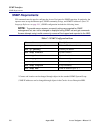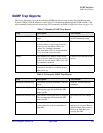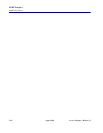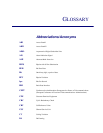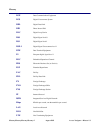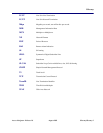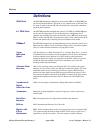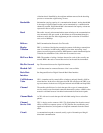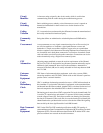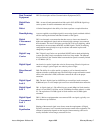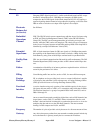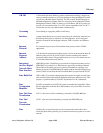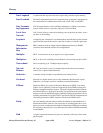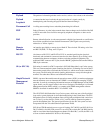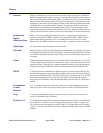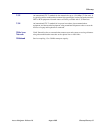Circuit
Identifier
A character string assigned by the circuit vendor, which is useful when
communicating with the vendor during the troubleshooting process.
Circuit
Switching
Basic switching process whereby a circuit between two users is opened on
demand and maintained for their exclusive use for the duration of the
transmission.
Coding
Violation
CV. A transmission error detected by the difference between the transmitted and
the locally calculated bit-interleaved parity.
Community
Name
String that defines an administrative relationship between SNMP entities.
Crossconnect A non-permanent, two-way signal connection using wire or fiber used to join
two circuits together or to complete a signal path between a source and
destination. A simple crossconnect might use copper wires on a punchdown
block to complete a circuit between an incoming telephone line connected to one
set of terminals and a desk phone connected to a second set of terminals. Patch
cords and cables can also be used to make connections. Connections can also be
made electronically using a Digital Crossconnect System.
CSU
Attenuation
Adjusting output amplitude to meet the receiver requirements of the Channel
Service Unit. CSUs are designed for long-distance operation and usually require
additional signal attenuation when closer to the transmitter. Attenuation is
measured in decibels (dB) and is usually selectable in fixed steps between 0 dB
and -22.5 dB.
Customer
Premises
Equipment
CPE. Items of telecommunications equipment, such as key systems, PBXs,
answering machines, and CSU/DSUs, which reside on the customer’s premises
past the carrier’s network interface.
Cyclic
Redundancy
Check
CRC. A technique for detecting transmission errors. A CRC indicator based on
the remainder of a polynomial calculation is performed on the transmitted data
and inserted into the frame overhead. Another CRC is calculated for the received
data and compared to the embedded CRC to check for transmission errors.
D4 D4 framing gets its name from AT&T corporation's D4-series channel banks. D4
is used for T1 transmissions and contains 12 separate 193-bit frames combined
to make a Super Frame (SF). Each frame contains one framing bit followed by
the data for 24 channels (8 bits each). D4 also uses the framing bit to identify the
channel bank and to synchronize the receiver to decode the robbed-bit signaling
data carried by the least-significant bit of each DS0 channel.
Data Communi-
cations
Equipment
DCE. In the EIA/TIA 232E standard specification, the RS-232 interface is
connected between Data Communications Equipment (DCE) and Data Terminal
Equipment (DTE). The main difference between the DCE and the DTE is that
pins two and three are reversed on the cable connector.



